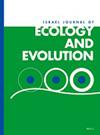Origin, diversity, and conservation of karst-associated Bent-toed Geckos (Genus Cyrtodactylus) in Myanmar (Burma)
IF 0.8
4区 环境科学与生态学
Q3 ECOLOGY
引用次数: 6
Abstract
Fifty-eight percent of the 43 known species of the Bent-toed Geckos (Cyrtodactylus) from Myanmar are found only in karstic habitats in the Shan Plateau and Salween and Ayeyarwady basins. A stochastic character mapping analysis indicated that the occupation of karstic habitats evolved at least four times independently in Burmese lineages with both Sundaic and Indian origins. Karstic habitats not only serve as foci for speciation but are refugia for species extirpated from the surrounding forested habitats due to agricultural development. Despite the high levels of biodiversity and site-specific endemism in karstic habitats in Myanmar, they are some of the least protected ecosystems. The immense financial returns from unsustainable resource extraction (cement manufacturing) makes the challenge of legal karst conservation extremely difficult. Sadly, their continued exploitation for limestone shows no signs of abating. Until karst habitats in Myanmar are thoroughly investigated, a significant portion of this country’s herpetological diversity will remain underestimated and unprotected.缅甸喀斯特弯趾壁虎(Cyrtodactylus属)的起源、多样性和保护
在缅甸已知的43种弯趾壁虎中,有58%仅在掸邦高原、萨尔温江和伊洛瓦底盆地的岩溶栖息地中发现。随机特征映射分析表明,喀斯特栖息地的占领在具有Sundaic和印度血统的缅甸血统中至少独立进化了四次。喀斯特栖息地不仅是物种形成的焦点,而且是由于农业发展而从周围森林栖息地灭绝的物种的避难所。尽管缅甸喀斯特栖息地具有高度的生物多样性和特定地点的地方性,但它们是受到保护最少的生态系统之一。不可持续的资源开采(水泥制造)带来的巨大经济回报使得喀斯特保护的法律挑战变得极其困难。可悲的是,他们对石灰岩的持续开采并没有减弱的迹象。除非对缅甸的喀斯特栖息地进行彻底调查,否则该国很大一部分爬行动物多样性仍将被低估和不受保护。
本文章由计算机程序翻译,如有差异,请以英文原文为准。
求助全文
约1分钟内获得全文
求助全文
来源期刊

Israel Journal of Ecology & Evolution
环境科学-进化生物学
CiteScore
2.10
自引率
0.00%
发文量
7
审稿时长
>36 weeks
期刊介绍:
The Israel Journal of Ecology and Evolution includes high-quality original research and review papers that advance our knowledge and understanding of the function, diversity, abundance, distribution, and evolution of organisms. We give equal consideration to all submissions regardless of geography.
 求助内容:
求助内容: 应助结果提醒方式:
应助结果提醒方式:


